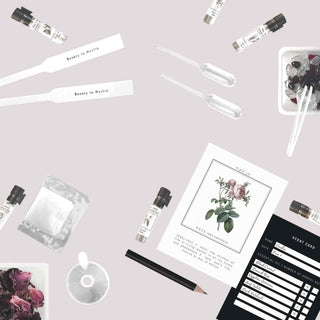Calendula is classified as a middle note in our Floral family. It adds a touch of softness, freshness, and femininity to fragrance compositions. Calendula's scent is often used to enhance and balance other floral notes, creating a harmonious and well-rounded fragrance.
Calendula is a versatile ingredient in perfumery and can be used in a variety of fragrance compositions. It blends well with other floral notes like rose, jasmine, and ylang-ylang, as well as with citrus, herbal, and woody notes. Calendula can be found in a wide range of perfumes, from light and refreshing floral scents to more complex and sophisticated compositions.
When used in perfumery, calendula adds a touch of natural beauty and radiance to fragrances. Its gentle and uplifting scent, along with its therapeutic benefits, makes it a popular choice among perfumers. Whether used as a main note or as a supporting ingredient, calendula brings a sense of freshness, positivity, and well-being to fragrance compositions.





